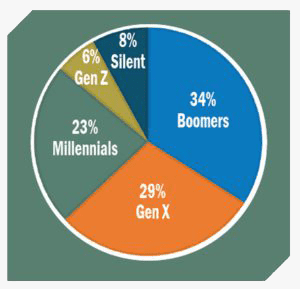- 914.468.0185
- info@agingissuesmgnt.com
- 143 Broadway, Suite 110, Hawthorne, NY 10532
Chances are most of us will need help at some point in our lives. In fact, those age 65 and older have a 70% chance of needing long-term care services at some point, according to the U.S. Department of Health and Human Services.
Relying on family to care for you is an appealing option. You have their love and trust, and it’s comforting to know they would care for you and ensure your well-being.
But what many don’t consider is the difference between a companion and a caregiver. Having family to assist you is great, but studies show that relying on them day in and day out for your personal care takes a toll on their physical and emotional health. Family members who work and provide caregiving services for a loved one are much more likely to suffer from stress, anxiety, or depression than those who aren’t caregivers.
Plus, many caregivers suffer long-term work and financial consequences from providing care. The majority of caregivers reported missing work or being late because of their caregiving responsibilities.2 In addition, 71% of caregivers say their financial contributions cause them stress, and many contribute even though the cost could put their own financial future in jeopardy. In fact, one-third had to cut back on their own expenses.3
Long-term care insurance is a good solution to this problem. It generally pays for care when you need it and where you’d like to receive it. The majority of people who rely on care as they age get that care at home. Long-term care insurance can pay for a wide range of care, from help with housework to visits from a nurse to care in an assisted living or nursing facility, if needed.
Long-term care insurance gives you options and allows your loved ones to spend quality time—not caregiver time—with you.

Long-term care insurance transfers a portion of the risk of long-term care expenses to an insurance company helping to protect you and your family from potentially devastating expenses.
Who are today’s family caregivers?*

*Caregiving in the U.S. 2020, National Alliance for Caregiving and AARP
These materials are provided for educational purposes only and do not constitute the solicitation of an insurance product to the public. For use with non registered products only. Products and programs offered through Crump are issued by various insurance companies and may not be available in all states. Policy terms, conditions and limitations will apply. Not all applicants will qualify for coverage. You can obtain more information about insurance products by contacting your insurance agent. Crump makes no representation regarding the suitability of a particular insurance product to your needs.
*Disclosure: Aging Issues Management LLC is a registered investment adviser. Advisory services are only offered to clients or prospective clients where Aging Issues Management LLC and its representatives are properly licensed or exempt from licensure. This website is solely for informational purposes. Past performance is no guarantee of future returns. Investing involves risk and possible loss of principal capital. No advice may be rendered by Aging Issues Management LLC unless a client service agreement is in place.
©2025